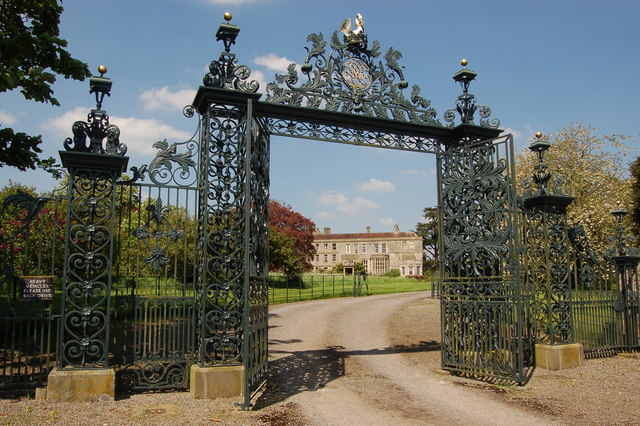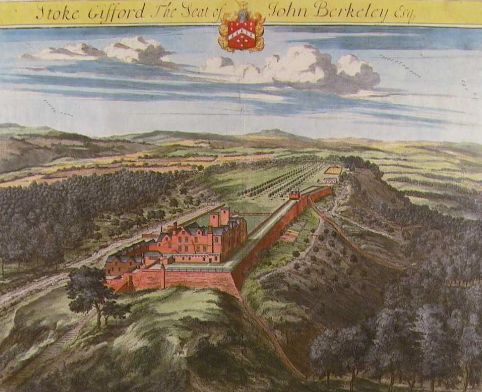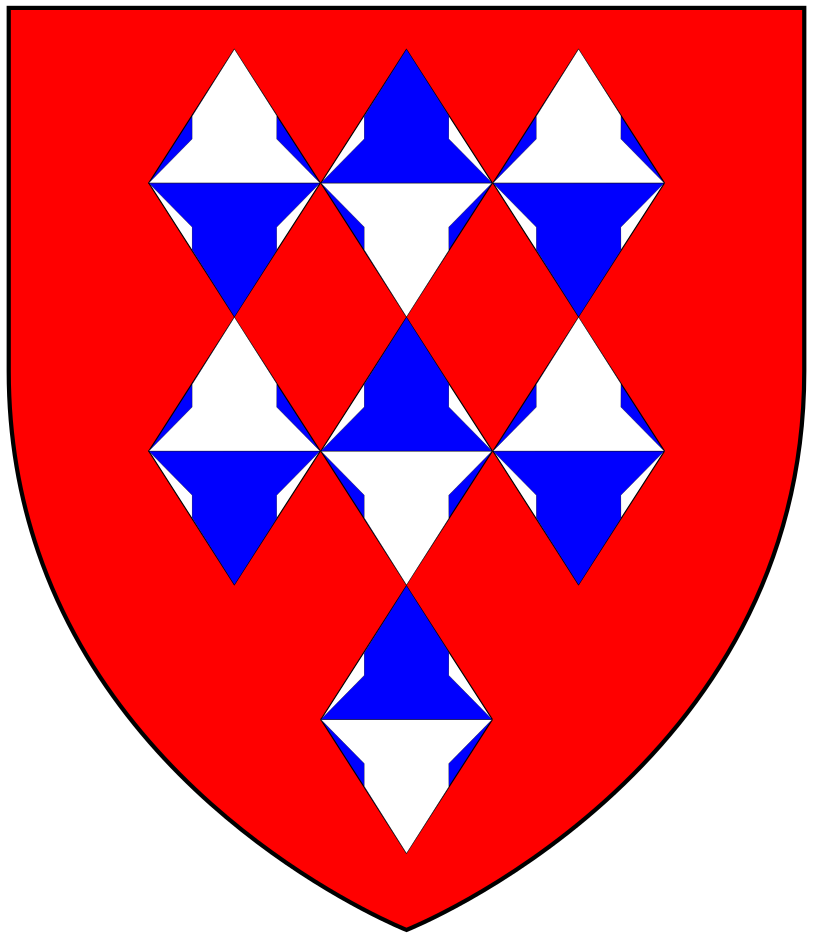|
Sir John Guise, 3rd Baronet
Sir John Guise, 3rd Baronet (c. 1677–1732) of Elmore Court, Gloucestershire was a British landowner and politician who sat in the House of Commons between 1705 and 1727. Guise was the only son of Sir John Guise, 2nd Baronet and his wife Elizabeth Howe, daughter of John Grubham Howe, MP of Compton Abdale, Gloucestershire and Langar, Nottinghamshire. He was granted the office of Constable of Gloucester Castle in May 1690, at the age of 12 and his father put him forward at the1695 general election for Cirencester. He was unsuccessful there. He succeeded to the baronetcy on the death of his father on 19 November 1695 and he tried to replace his father as MP for Gloucestershire by standing in the ensuing by-election. Despite spending £1,000, he was defeated. In 1697 he was Colonel of the White Regiment of Gloucestershire Militia.Col George Jackson Hay, ''An Epitomized History of the Militia (The Constitutional Force)'', London:United Service Gazette, 1905, p. 118./ref> Guise m ... [...More Info...] [...Related Items...] OR: [Wikipedia] [Google] [Baidu] |
Elmore Court
Elmore Court is a grade II* listed mansion, located at Elmore in the Stroud district of Gloucestershire, England. The original building dates from between 1564 and 1588. History The house has been the family seat of the Guise Baronets for nearly 800 years, first granted by John of Burgh, who was part of the court of Henry III with the rent set at "One clove of Gillyflower" each year. The current house was built between 1564 and 1588 and altered in the 18th and 19th centuries. The Guise Mausoleum, built in 1733, is in the churchyard of St John the Baptist, the local church. The Guise family were non-resident from about 1685 to about 1845, when Sir John Wright Guise took up residence. The house was used as a school from 1778, originally under the Revd. Charles Bishop (died 1788), and later under the Carveth family to about 1830. Its most distinguished pupil was the future surgeon William Lawrence FRS. The house was owned by Sir Anselm Guise, 6th Baronet, from 1921 to 1970. ... [...More Info...] [...Related Items...] OR: [Wikipedia] [Google] [Baidu] |
1710 British General Election
The 1710 British general election produced a landslide victory for the Tories. The election came in the wake of the prosecution of Henry Sacheverell, which had led to the collapse of the previous government led by Godolphin and the Whig Junto. In November 1709 the clergyman Henry Sacheverell had delivered a sermon fiercely criticising the government's policy of toleration for Protestant dissenters and attacking the personal conduct of the ministers. The government had Sacheverell impeached, and he was narrowly found guilty but received only a light sentence, making the government appear weak and vindictive. The trial enraged a large section of the population, and riots in London led to attacks on dissenting places of worship and cries of "Church in Danger". The government's unpopularity was further increased by its enthusiasm for the war with France, as peace talks with the French king Louis XIV had broken down over the government's insistence that the Bourbons hand ove ... [...More Info...] [...Related Items...] OR: [Wikipedia] [Google] [Baidu] |
John Clavering (died 1762)
John Clavering (19 July 1698 – 23 May 1762) of Chopwell Hall, Chopwell, formerly County Durham, now Tyne and Wear, was a member of a junior branch of the Clavering family. He was the son of John Clavering of Chopwell and was a Groom of the Bedchamber at the Court of George II from 1731 to 1761. He was Member of Parliament for Great Marlow Great Marlow is a civil parish within Wycombe district in the English county of Buckinghamshire, lying north of the town of Marlow and south of High Wycombe. The parish includes the hamlets of Bovingdon Green, Burroughs Grove, Chisbridge Cr ... 1727–1731 and Penryn 1734–1741. His London address was 8 Burlington Street, where the new house was built for him on a 62-year leasehold in 1734. He inherited the Chopwell estate from his father and an estate at Potter Newton, near Leeds, from his mother. He died unmarried and bequeathed his property to his nephew, the 2nd Earl Cowper. References 1698 births 1762 deaths ... [...More Info...] [...Related Items...] OR: [Wikipedia] [Google] [Baidu] |
Edmund Waller (died 1771)
Edmund Waller (c.1699–1771), of Hall Barn, Beaconsfield, was a British landowner and Whig politician who sat in the House of Commons for 32 years from 1722 to 1754. Early life Waller was the eldest son of Stephen Waller and his wife Judith Vernon, daughter of Sir Thomas Vernon of Farnham, Surrey. In about 1700 he succeeded to the Gloucestershire estates of his uncle Edmund Waller and in 1707 to the estates of his father. He was educated at Eton College in 1707. He married, before 1724, Jane Aislabie, who was daughter of his mother's former husband, John Aislabie. Political career Waller owned estates near both Marlow and Wycombe, which gave him political influence in both boroughs. At the 1722 general election, he was returned as a Whig Member of Parliament for Great Marlow on the family interest. He supported William Pulteney and in 1725 went into opposition with him. In 1726, he supported his younger brother, Harry, at a by-election at Wycombe, although his successfu ... [...More Info...] [...Related Items...] OR: [Wikipedia] [Google] [Baidu] |
George Bruere
George Bruere (died 1743), of Covent Garden, London, and Great Marlow, Buckinghamshire, was an English Member of Parliament. He was a Member (MP) of the Parliament of England for Great Marlow Great Marlow is a civil parish within Wycombe district in the English county of Buckinghamshire, lying north of the town of Marlow and south of High Wycombe. The parish includes the hamlets of Bovingdon Green, Burroughs Grove, Chisbridge Cr ... 8 December 1710 to 1722. References 17th-century births 1743 deaths 18th-century English people Politicians from Buckinghamshire Politicians from London Members of the Parliament of England (pre-1707) {{England-pre1707-MP-stub ... [...More Info...] [...Related Items...] OR: [Wikipedia] [Google] [Baidu] |
Henry Petty, 1st Earl Of Shelburne
Henry Petty, 1st Earl of Shelburne PC (I) (22 October 1675 – 17 April 1751) was an Anglo-Irish peer and politician who sat in the House of Commons from 1715 to 1727. Background Petty was a younger son of Sir William Petty and Elizabeth, Baroness Shelburne, daughter of Sir Hardress Waller. He succeeded his elder brother Charles Petty, 1st Baron Shelburne to the family estates in 1696 and then bought further estates near Wycombe, Buckinghamshire. Political career Petty was elected to the Irish House of Commons for Midleton in 1692, a seat he held until 1693, and then represented County Waterford between 1695 and 1699. The latter year the barony of Shelburne which had become extinct on the early death of his elder brother in 1696 was revived in his favour. Two years later he was sworn of the Irish Privy Council. He was later a member of the British House of Commons for Great Marlow between 1715 and 1722 and for Wycombe between 1722 and 1727. In 1719 he was further honoured wh ... [...More Info...] [...Related Items...] OR: [Wikipedia] [Google] [Baidu] |
John Symes Berkeley
John Symes Berkeley (1663–1736) of Stoke Gifford near Bristol was an English Member of Parliament. He was born the second son of Richard Berkeley of Stoke Gifford and inherited the family estates on the death of his elder brother in 1685, including Stoke Park. He later exploited the rich coal deposits beneath the estate and commissioned Sir James Thornhill to rebuild a summerhouse at the end of the terrace of Stoke Park House as an orangery. He was twice elected to represent the constituency of Gloucestershire in the Parliament between 1710 and 1715. He died at Bath in 1736 and was buried at Stoke Gifford. He had married twice; firstly in 1695, Susan, the daughter and heiress of Sir Thomas Fowles and the widow of Jonathan Cope and secondly in 1717, Elizabeth, the daughter and coheiress of Walter Norborne of Calne, Wiltshire and widow of Edward Devereux, 8th Viscount Hereford, with whom he had a son, Norborne Berkeley, 4th Baron Botetourt, a future Governor of Virginia and a ... [...More Info...] [...Related Items...] OR: [Wikipedia] [Google] [Baidu] |
Matthew Moreton, 1st Baron Ducie
Matthew Ducie Moreton, 1st Baron Ducie (1663–1735) of Moreton, Staffordshire, and Tortworth, Gloucestershire, was a British Army officer and politician who sat in the House of Commons between 1708 and 1720 when he was raised to the peerage as Baron Ducie. Moreton was baptized on 17 March 1663, the eldest son of Edward Moreton of Moreton and Engleton, Staffordshire and his wife Elizabeth Ducie, daughter of Robert Ducie of Little Aston, Staffordshire. His mother was heir to her uncle William Ducie, 1st Viscount Downe, of Tortworth, who died in 1679. He was admitted at Queens' College, Cambridge in 1681 and awarded MA in 1682. Moreton joined the army and was a cornet in Lord Grey's independent troop of horse in 1685 at the time of the Monmouth rebellion. This was disbanded after the Battle of Sedgemoor. In 1687, he transferred to the 3rd Dragoon Guards and served in Flanders during the reign of William III. His father died in 1687 and he succeeded to his estate. He was a capt ... [...More Info...] [...Related Items...] OR: [Wikipedia] [Google] [Baidu] |
Maynard Colchester
Maynard Colchester (4 March 1665 – 1715), of Westbury Court and the Wilderness, was an English lawyer and politician who sat in the English and British House of Commons from 1701 to 1708. Colchester was the eldest son of Sir Duncombe Colchester of Westbury Court and the Wilderness and his wife Elizabeth Maynard, daughter of Sir John Maynard . He matriculated at Exeter College, Oxford in 1681 and was admitted at Middle Temple in 1682. In 1689, he was called to the bar. He married Jane Clarke (died 1741), daughter of Sir Edward Clarke of St. Peter Cheap and Gutter Lane, London, on 28 January 1690. He succeeded his father in 1694.COLCHESTER, Maynard (1665-1715), of Westbury Court, Westbury-on-Severn, and the W ... [...More Info...] [...Related Items...] OR: [Wikipedia] [Google] [Baidu] |
Sir John Guise, 4th Baronet
Sir John Guise, 4th Baronet (1701 – May 1769), of Elmore Court and Rendcomb, both in Gloucestershire, England, was an English Whig politician who sat in the House of Commons from 1722 to 1727. Early life Guise was the only surviving son of Sir John Guise, 3rd Baronet and his first wife. He was educated at Marlborough between 1709 and 1711 and matriculated at New College, Oxford on 27 June 1720, aged 19. Career Guise was returned as a Whig Member of Parliament for Aylesbury at the 1722 British general election. There is no record of a vote by him. He lost his seat at the 1727 British general election to a follower of Walpole. He stood at a by-election for Great Marlow in 1731, where his father had an electoral interest but was defeated and did not stand again. Later life and legacy Guise married Jane Saunders, the only daughter of John Saunders of Mongewell, Oxfordshire, by a settlement dated 14 June 1732. He succeeded his father in the baronetcy on 16 November 1732. In 173 ... [...More Info...] [...Related Items...] OR: [Wikipedia] [Google] [Baidu] |
1727 British General Election
The 1727 British general election returned members to serve in the House of Commons of the 7th Parliament of Great Britain to be summoned, after the merger of the Parliament of England and the Parliament of Scotland in 1707. The election was triggered by the death of King George I; at the time, it was the convention to hold new elections following the succession of a new monarch. The Tories, led in the House of Commons by William Wyndham, and under the direction of Bolingbroke, who had returned to the country in 1723 after being pardoned for his role in the Jacobite rising of 1715, lost further ground to the Whigs, rendering them ineffectual and largely irrelevant to practical politics. A group known as the Patriot Whigs, led by William Pulteney, who were disenchanted with Walpole's government and believed he was betraying Whig principles, had been formed prior to the election. Bolingbroke and Pulteney had not expected the next election to occur until 1729, and were consequ ... [...More Info...] [...Related Items...] OR: [Wikipedia] [Google] [Baidu] |
1722 British General Election
The 1722 British general election elected members to serve in the House of Commons of the 6th Parliament of Great Britain. This was the fifth such election since the merger of the Parliament of England and the Parliament of Scotland in 1707. Thanks to the Septennial Act of 1715, which swept away the maximum three-year life of a parliament created by the Meeting of Parliament Act 1694, it followed some seven years after the previous election, that of 1715. The election was fiercely fought, with contests taking place in more than half of the constituencies, which was unusual for the time. Despite the level of public involvement, however, with the Whigs having consolidated their control over virtually every branch of government, Walpole's party commanded almost a monopoly of electoral patronage, and was therefore able to increase its majority in Parliament even as its popular support fell. In the midst of the election, word came from France of a Jacobite plot aimed at an immi ... [...More Info...] [...Related Items...] OR: [Wikipedia] [Google] [Baidu] |


